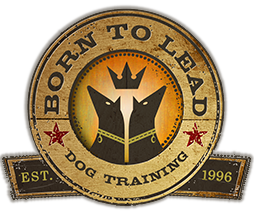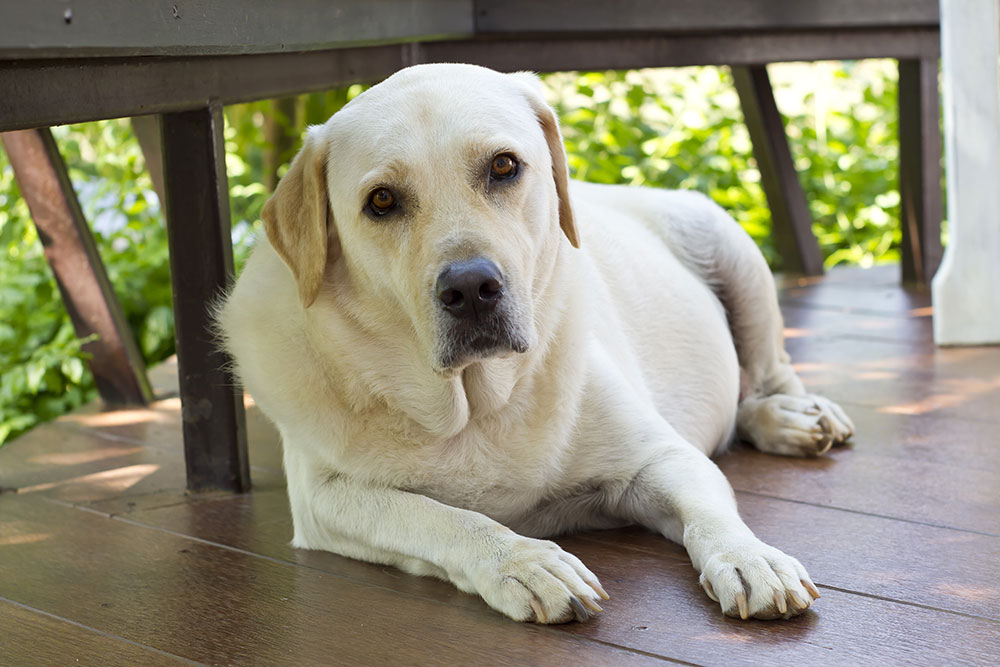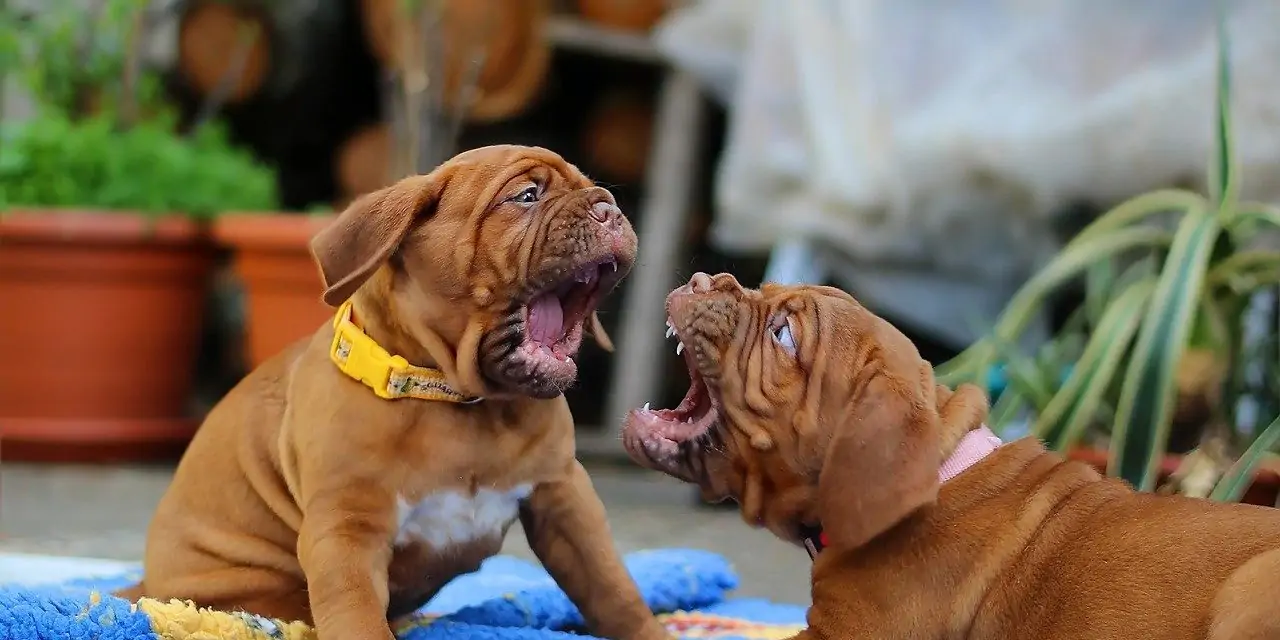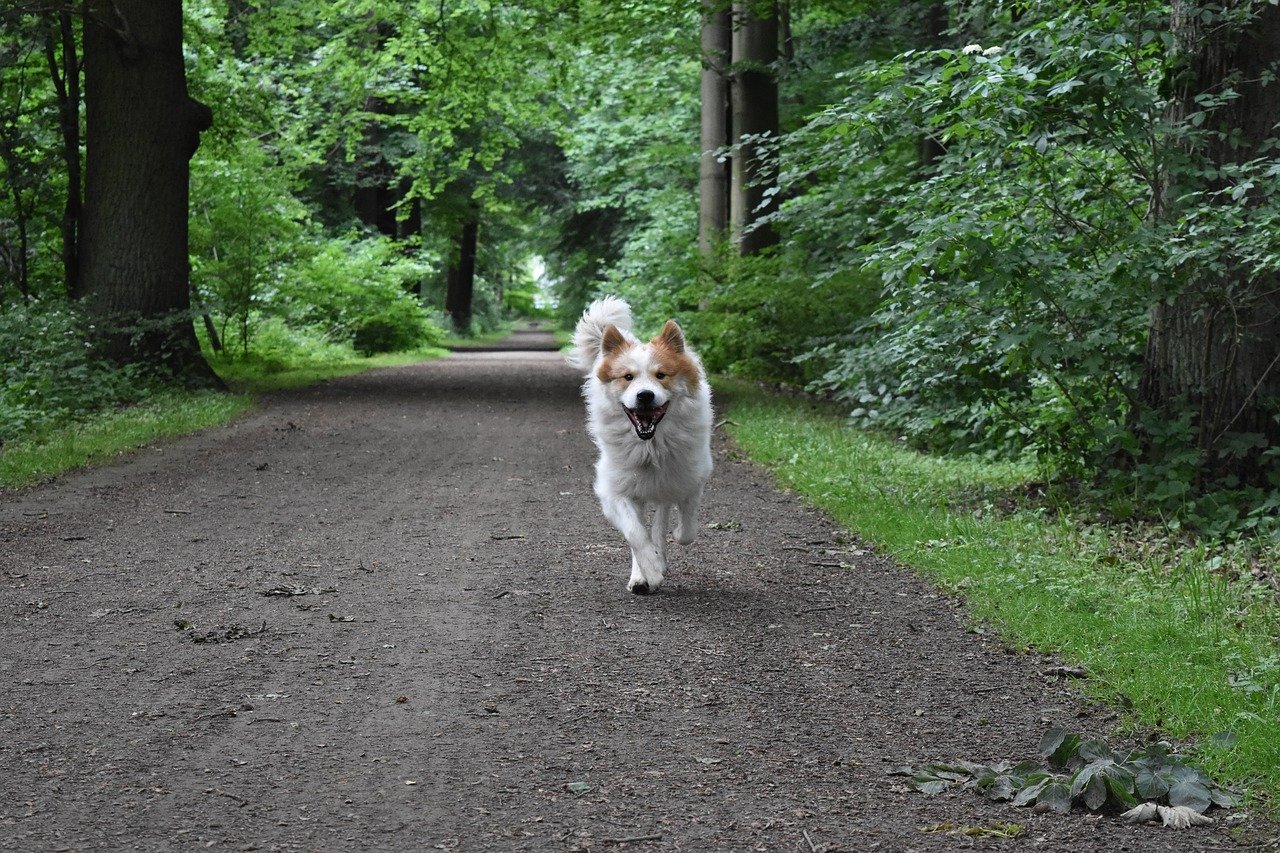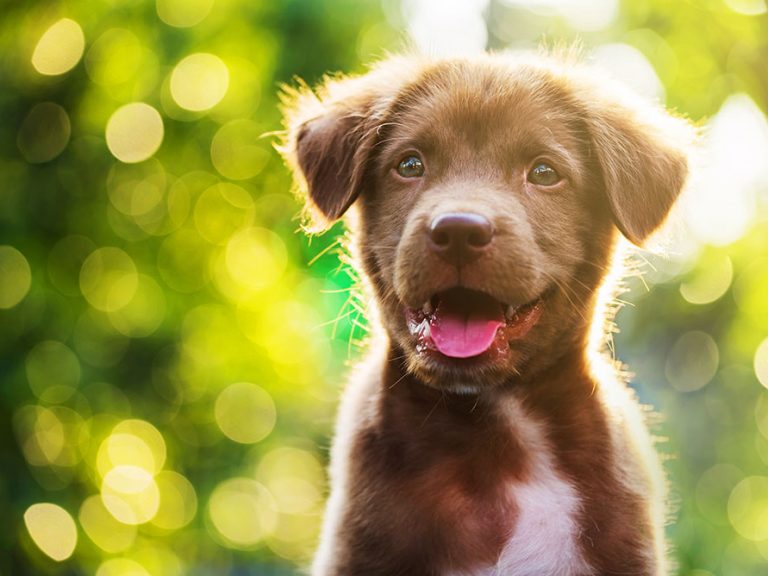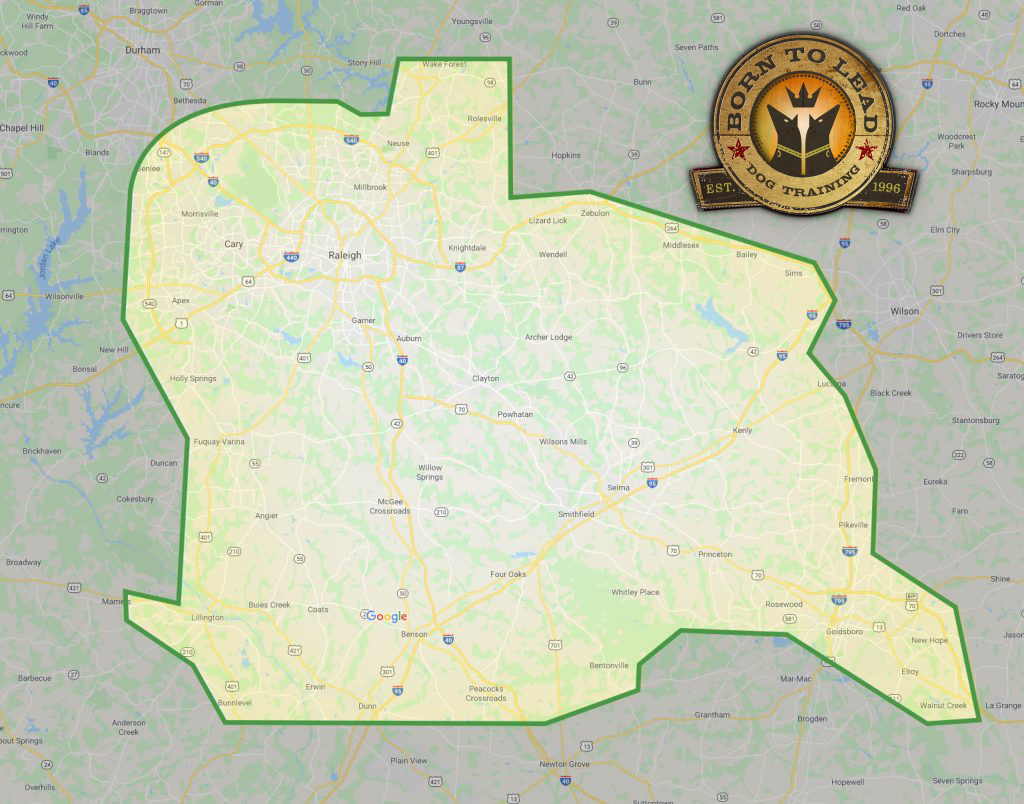The Early Window Of Socialization
To understand canine dysfunctional aggression you need to understand factors in play when the dog was a puppy. Beginning at three weeks, when their eyes open, and lasting until fourteen weeks of age, puppies develop bonds and sensitivity to the people and animals in their life. If a puppy is not exposed to positive interaction with dogs during this period they may grow up without the skills they need to deal with other dogs. If they are not exposed to people in a positive way during this period they may never be comfortable with people. The middle of this learning window (8 weeks) is the best time to purchase a puppy.
Puppies brought to their new home at ten to twelve weeks of age may be more fearful and slower to bond with their new family. If the socialization process is delayed until the puppy is twelve weeks old or older the dog may never be relaxed or interactive with people or other dogs.
This is particularly true if the puppy has a natural shyness and fearfulness or if it is very aggressive by nature. If you do accept a puppy of this age be sure that you and your children handle it frequently and gently. Holding the puppy firmly and resisting the temptation to let go of it when it squirms to be released minimizes later aggression and dominant behavior.
A puppy’s teenage years begin when it is around 8-9 months old and ends when the pup is about 19-20 months old. Near the end of this period, there is a hormonal surge that causes dogs to become protective and territorial. Males begin to lift their leg to urinate and females enter their first heat period. This will be the time that a normal dog begins to bark at strangers and guard the family and your property. This is also the time that some dogs begin to show objectionable aggressive behavior.
Factors Influencing Aggression
Besides age at socialization, individual genetics and breed are major factors in determining aggression. Guard dogs such as Rottweilers, German Shepherds and Akitas were bred to be more aggressive than the hunting and companion breeds. Terriers were bred as ratters and still retain their urge to snap. Hormones at play in intact male dogs and in females nursing puppies both increase aggressive behavior. Excessive punishment, lack of exercise, teasing and chaining in the yard can all contribute to problem behavior.
Types Of Aggression
There are a number of types of aggression. The most common forms are fear, dominant and territorial aggression. Some dogs show fearful, possessive or intra-sexual (male to male and female to female) aggression while others have a predatory form of this trait. Most dogs have more than one type of aggression.
Dominance Aggression in dogs
The Problem:
Dominant aggressive dogs are overly protective of their possessions and status. This is a common form of aggression. These dogs tend to snarl and growl or snap when a family member approaches them near their food bowl. They attack other dogs as well as cats and farm yard animals. They often attempt to mount people’s legs. When petted, groomed or detained in any way they will growl and snap.
The first warning sign you may have a dog prone to dominant aggression is when, as a small puppy, it growls when you approach it at its food dish or toy. This is the earliest sign of dominance. As this type of dog personality grows it will attempt to take charge of the house and the decision making process. Dogs that have dominant type aggression are very confident in new situations. Dominant aggressive dogs have very distinctive body language. They stand with their heads erect and their ears bent forward. They carry their tails proudly and stare intently at strange people and pets. They stand still facing the new individual and emit a low steady growl while they curl their lips and expose their teeth. They demand to be the center of attention in all situations and must make the decision as to who does what and when. They are oblivious to commands from their owner and never heal or look to their owner for advice or reassurance. They often mark new areas. Most of these dogs are un-neutered males.
Dogs as part of the family see humans as members of their pack and attempt to establish their place in the social hierarchy by challenging more submissive family members, especially children. When dogs show dominant gestures such as growling while guarding their food dish and they aren’t scolded for this behavior, they inch up in dominance surpassing certain family members. Subtle signs of dominance often go unnoticed because we love them we explained these faults away until the dog finally bites a human who infringed on its alpha position. Owners often do not realize what occurred and think the dog bit for no reason. These dogs are often surrendered to animal shelters and are killed because their owners did not understand how aggressive behavior comes about.
The Solution:
Passive, submissive family members often have insurmountable problems correcting aggressive dogs. Obedience training is very helpful with this form of aggression but you must be willing and able to dominate the pet. The first thing to do when trying to correct this problem is to change the pecking order of the pack – in this case the hierarchy within your family. Dogs are always happier not to have to be pack leaders. The dog needs to be at the bottom of the pack. You must become the pack leader. Husbands are often more assertive than their wives. Many dogs that I see in my practice obey the husband and not the wife. To gain control of your dog you need to dominate every aspect of the dog’s life. When you play tug of war with the pup or dog; do not let it end up with the ball or rope when you are finished. When you feed the dog do not let it eat until you allow it to. Do not let dominant-prone dogs sleep in your bed or in the bedroom. Reserve that space for your family. Do not feed these dogs from the table. Instead, crate them during meals and feed them last. Neutering a young male dog can significantly decrease aggression. Neutering them later in life is much less effective. If the dog has already begun to bite owners hiring a professional dog trainer is a good idea. You need to realize that not all dogs can be cured of aggression and a trained dog may revert to its previous bad habits.
General Rules For Preventing Aggression
Puppies: Aggression ceases to be a problem when the pup becomes the lowest ranking member of the family. Once a dog accepts this social status he is well on his way to becoming a welcome addition to the family.
The first step goes back to before you purchase or accept a pup. Be sure that the breed and the individual puppy you choose are the right for your family. Sit alone in a room with the entire litter and observe them for a while. The more dominant pups will soon take charge of play activities and seek out strangers in the room. The fearful pups will be the ones that sit alone in the corner looking downcast. If you want a well behaved pet, do not choose the most dominant or the most fearful puppy. Breeds such as German Shepherds, Akitas and Rottweilers are not good breeds for timid owners. They need a family in which all members are willing to exert their authority. Lap dogs are wonderful pets but they do not like rowdy children. If you choose a shy puppy you must be willing to spend extra time coaxing it’s courage in new situations. Realize that it may never become a confident dog.
All puppies need to be handled gently, firmly and frequently between the ages of six and eighteen weeks. They should be hand-fed by all members of the family and taught to accept food slowly without snapping or lunging. They should be reprimanded or denied affection for barking or jumping up on people. Aggression-prone dogs should not be rough housed with, wrestled with or engaged in tug of war. Instead of physically punishing them one should speak to with a sharp “No” when they break the rules and then deny them affection and interaction for ten minutes.
Puppies learn good behavior from other dogs. It is good to expose them to well trained, people-friendly, non-aggressive dogs as playmates. It is amazing how quickly good behavior rubs off on misbehaving pets.
Adult Dogs:
Once a dog has assumed a dominance aggressive temperament it can be very difficult and sometimes impossible to change his outlook. Through fear, he may allow one or two members of the family to dominate him but he may never be fully trustworthy around lower ranking members of the family and children. I personally think these dogs are unhappy in their roles and long to have more assertive owners.
Adult dogs should always receive rewards for good behavior and be denied rewards for bad behavior. Normal dogs love to be petted and have their heads patted. If you have a dog that is prone to aggression or bad behavior of any kind, always have your dog sit and heel before anything good happens to him. Dogs should be taught to sit calmly before a reward or any interaction. These may not seem like important things but they help define the rules that apply to all activities that you and your pet will share. They also teach the dog that you set the rules. You must be totally consistent in your praise AND criticisms. The dog will quickly learn that a given behavior will always illicit a positive or negative response from you. Never let him win a showdown or take charge. If you give an inch they will take a mile. Praising and loving a dog spontaneously out of the blue confuses the dog. It also elevates the dog’s social status and can lead to dominance aggression. It is much better to have him sit or fetch and then give him all the praise you want. Neutering a dog in adolescence also decreases the likelihood that dominance aggression will be a problem.
You can try to alter triggers in your home that lead to outbursts of dominance aggression. For instance, if a dog growls when you approach it on the sofa make the sofa off limits to the dog. If a specific adult family member is being dominated by the dog, have them become the sole provider and care giver. During this period have other family members ignore the dog. Dogs do not dominate people on whom they MUST rely on.
Always reward these pets when they show signs of submission. These signs include laying their ears back on their heads, rolling over, sitting, avoiding eye contact and approaching with their heads lowered. Once a dog is displaying some of these activities begin slowly counter conditioning the dog to submission. This is done by getting the dog to allow you to handle its paws, hold it in a sitting or laying position and holding it’s head still. Make the dog sit before it is allowed to fetch. Praise him and give him a food treat when he cooperates and gradually increase the length of his lessons.
Dogs that are severely dominant aggressive often stubbornly resist change to their status in the family. There are professional dog trainers who will attempt to modify your behavior toward the dog and the dog’s behavior toward you. But they are not always successful or they may only be moderately successful. Rather than martyr you and your family to a long term, tense and unhappy situation, I suggest that families in this situation find another home for their pet. It is amazing how much better a dog’s behavior can be in a new home.
Fear Biting Dogs
The Problem:
These dogs are very uncertain and tentative in their actions. They are sometimes called defensive – aggressive dogs. When faced with new situations with people or dogs they avoid direct eye contact and assume a low submissive stance. They stand with their ears flat against their heads and their tails tucked between their legs. They bend their head and neck toward any individual that seeks their attention while they lick their lips. They will often roll on their backs exposing their belly. Their expression is one of profound worry. They are very fearful about being touched and shy away from being petted, stroked or brushed. At any instant they may snap and bite in fear. They strike out silently like a snake, never locking their jaws on another person or pet. They will often urinate and defecate in fear.
The Solution:
Some fear biting dogs were genetically born shy. It is highly unusual for a shy puppy to be born from gregarious, confident parents. One needs to do everything possible to build up these dogs sense of confidence. Do this with verbal praise, petting and treats. Keep in mind that an over stressed dog will not take food. Enlist your friends in this activity. In order not to get bit, begin this process with a muzzled dog. If a shy dog comes to you of it’s own free will, generally speaking, it will not bite unless a sudden movement or loud sound is made. With the dog muzzled take him wherever you go to expose him to new people and situations. Begin slowly – no more than the dog park parking lot. Keep the leash short. Stay calm and feel confident, you must lead by example. Obedience training is very helpful as well. This will help build confidence and foster positive communication.
It has been mentioned by some that a small dose of Acepromazine tranquilizer is extremely helpful in starting these dogs in their education. You can give acepromazine at 0.38mg/pound. You can pick it up at your veterinarians and give it in a food treat thirty minutes before lessons. I would recommend you do this only if needed. Try it first without it and see how it goes.
Territorially Aggressive Dogs
The Problem:
Fiercely guarding their home is common characteristic of dogs. Dogs have an innate need dominate their own real estate. As puppies grow to dogs they begin to regard the yard, the home and the car as their personal property. Territorial aggression is what gets the mailman and the meter reader bitten.
Territorial aggression is a prized attribute in guard dog breeds such as German Shepherds, Rottweilers and Akitas. If you do not want an aggressive guard dog do not purchase these breeds. Some dogs readily learn to differentiate between welcome guests and intruders but others do not. They are very good at sensing your attitude toward strangers. If you are fearful, these dogs know it and will become protective.
The Solution:
To control a territorial dog you must first dominate the dog as the leader of the pack. In wolf packs an alpha-type individual leads the pack. Becoming the pack leader is the first step in making the dog obedient to you. You set the rules and you decide who is friend and who is foe. The dog should look at you for advice when a stranger approaches. Enlist some friends to help you by approaching the house when the dog is hungry and feeding it some treats as they approach if the dog stays calm. Let your friends or willing strangers tag along on short walks with you and the dog.
Predatory Aggression:
The Problem:
Australian shepherds, Healers, Border Collies and other herding dogs have an instinctive drive to chase, worry and nip. It takes a supreme effort on their part not to apply their herding talents to children of the family as well.
The Solution:
Obedience training by every member of the family – especially the children helps correct this problem. These dogs are well intentioned, but they have a very strong natural urge to boss and herd. This can be overcome if you make the dog aware that it is an un-welcomed behavior among human. A sharp reprimand and a “no” is usually sufficient. You have to occasionally remind them of the rules. Dogs will usually not express this behavior when they are on a short leash.
